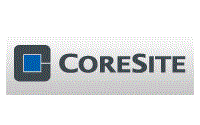Amazon Web Services (AWS) generated $6.679 billion in revenue in Q3 2018, up 46% compared to a year ago. The business unit achieved operating income of $2.077 billion for the quarter, up 77% compared to year ago.
The annualized run rate is now above $26 billion.
Operating margin for AWS was 31%, while capital leases for data centers were up 9% yoy.
AWS Highlights for Q3
The annualized run rate is now above $26 billion.
Operating margin for AWS was 31%, while capital leases for data centers were up 9% yoy.
AWS Highlights for Q3
- AWS will open an infrastructure region in South Africa in the first half of 2020. The new AWS Africa (Cape Town) Region will consist of three Availability Zones.
- Currently, AWS provides 55 Availability Zones across 19 infrastructure regions worldwide, with another 12 Availability Zones across four AWS Regions in Bahrain, Hong Kong SAR, Sweden, and a second GovCloud Region in the U.S. expected to come online in the coming months.
- New customer commitments and major migrations during the quarter: DoorDash is all-in on AWS; Hubspot and Samsung Heavy Industries selected AWS as their Preferred Public Cloud Provider; and Yelp moved its master database from its own data center to AWS, completing its migration to the AWS cloud.
- AWS announced a multi-year, global agreement to build a new multi-billion dollar DXC to deliver IT migration, application transformation, and business innovation to global Fortune 1000 clients.
- AWS announced the general availability of new High Memory instances for Amazon Elastic Compute Cloud (Amazon EC2) for large in-memory databases, including production deployments of SAP HANA.
- AWS announced the general availability of T3 instances, the next generation of burstable general-purpose instances for Amazon EC2.
- AWS announced general availability of a high frequency instance (z1d) for Amazon EC2, as well as the next generation of memory optimized instances (R5), and memory optimized instances with local storage (R5d).
- AWS announced the general availability of Amazon Aurora Serverless, a new deployment option for Amazon Aurora that automatically starts, scales, and shuts down database capacity with per-second billing for applications with less predictable usage patterns.
- AWS announced Amazon Relational Database Service (Amazon RDS) on VMware.

























